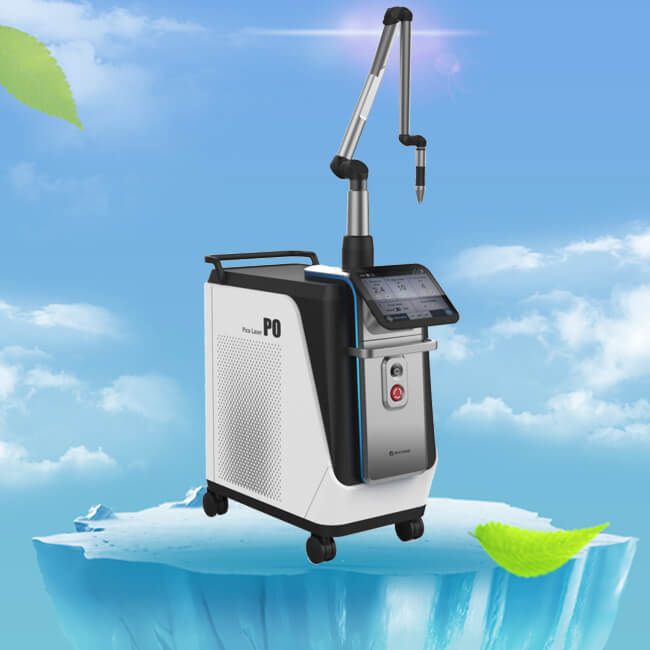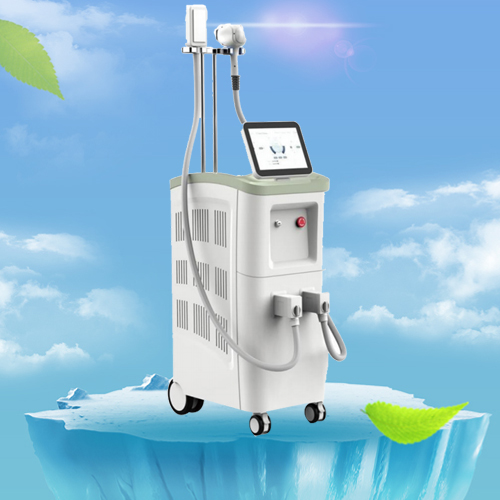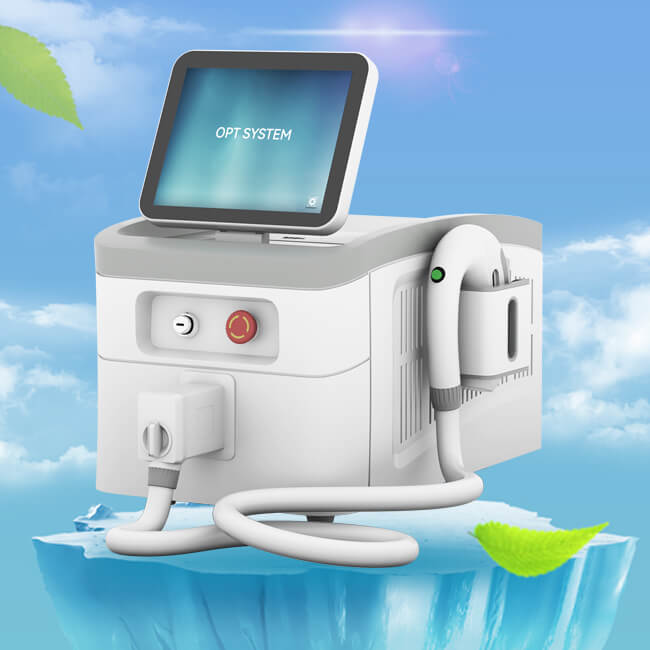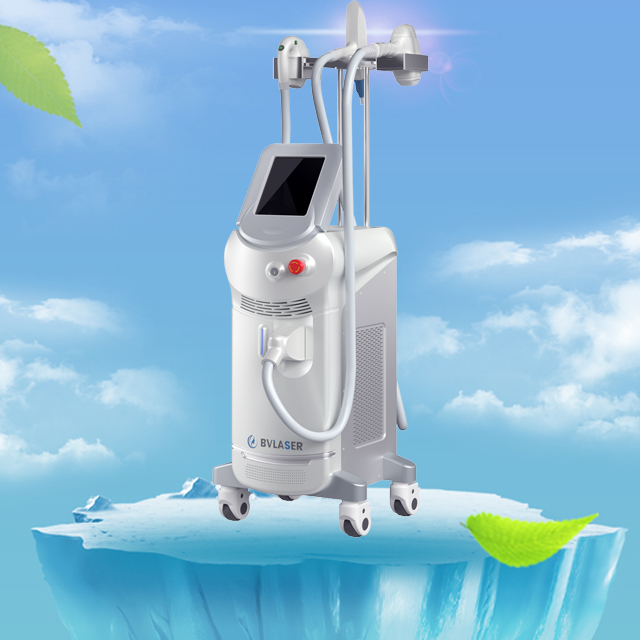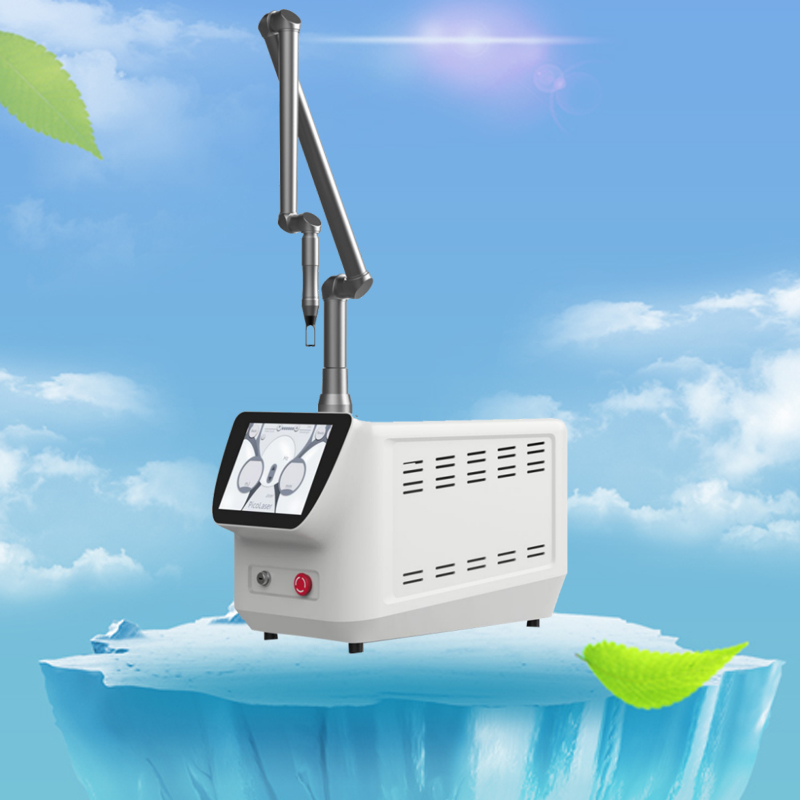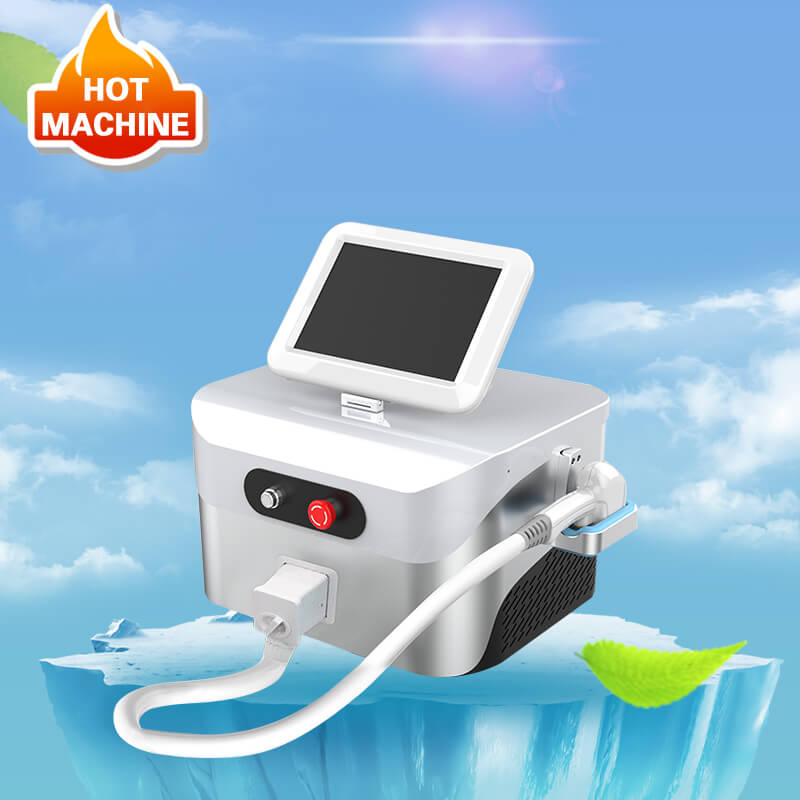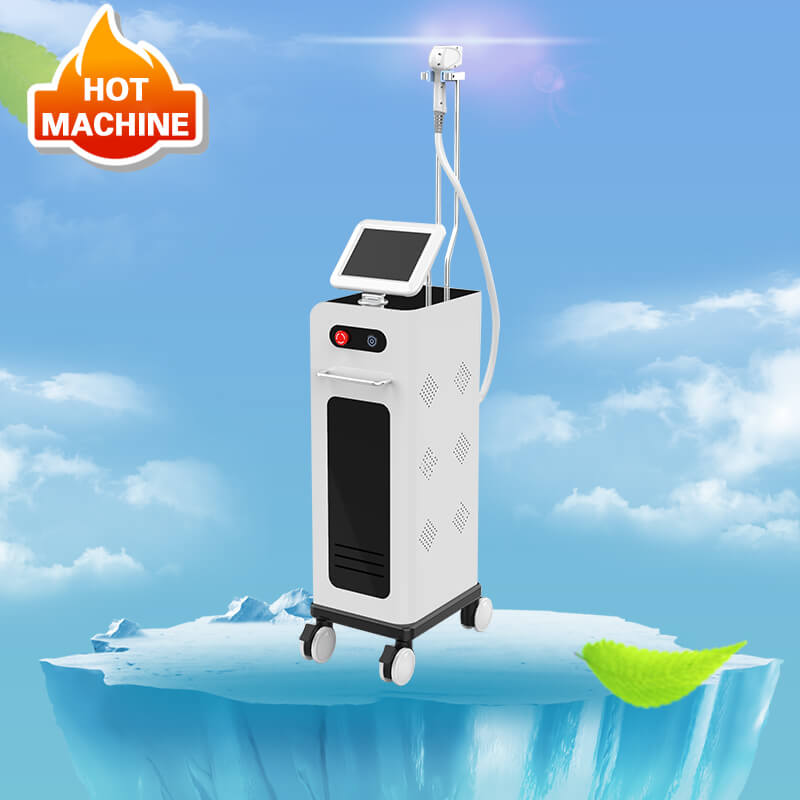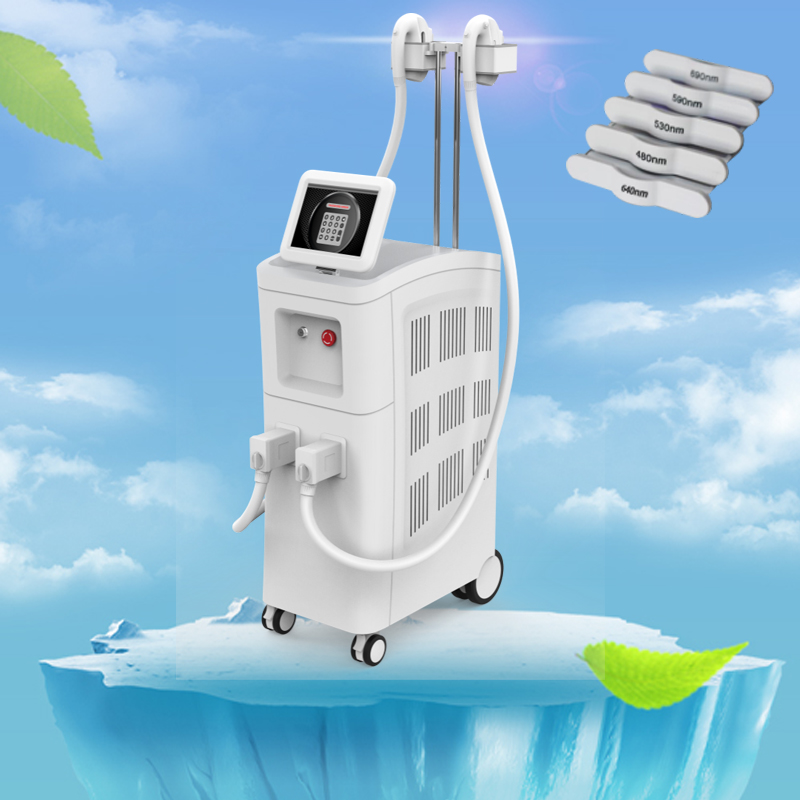How is an IPL Treatment Performed
Author:baishilf Time:2024-08-01 17:16:15
Intense Pulsed Light therapy, commonly known as IPL, is used to perform skin treatments for aesthetic and therapeutic purposes. During the IPL treatment, a handheld device is passed across the skin’s surface delivering pulses of broad-spectrum light to the deep layers of the skin. Bestview Laser is a professional IPL machine manufacturer, we have IPL hair removal machine for sale.
Intense Pulsed Light (IPL) treatment, which is also sometimes referred to as Photofacial treatment, is a versatile light-based skin rejuvenation treatment designed to treat a number of skin pigmentation problems, including:
1.Sun damage.
2.Age spots or sun spots.
3.Hyperpigmentation.
4.Melasma.
5.Freckles.
6.Broken capillaries.
7.Redness or flushing.
8.Vascular birthmarks (telangiectasias).
9.Additionally, IPL is an effective treatment for permanent hair reduction.
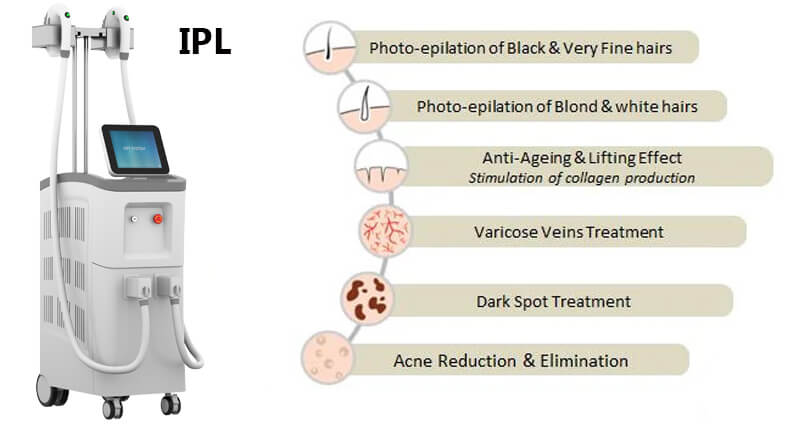
IPL Indications
Intense Pulsed Light IPL therapy is ideal for recovering “sun-worshippers” wishing to improve the skin tone of their face, neck, chest or hands after years of sun damage. Patients suffering from acne and rosacea may also benefit from IPL treatment, as can patients who wish to have unsightly vascular birthmarks removed. IPL hair removal is indicated only for patients with light or fair skin and dark facial or body hair, whereas laser hair removal is more appropriate for patients with darker or ethnic skin tones.
IPL Treatment
For skin rejuvenation and permanent hair reduction, IPL photofacial machine therapy is typically performed in a series of 3—5 treatments spaced three to four weeks apart. The number of treatments you need depends on the severity of your skin conditions. Your skin will be cleansed and topical anesthesia may be applied prior to your IPL Photofacial but is typically unnecessary, as a cooling device is used on your skin throughout the procedure to ensure you are comfortable. Eye protection will be provided for your use during treatment, which takes about half an hour. In order to avoid potential IPL side effects, such as burns or permanent pigmentation changes, it is best to seek IPL treatment from a board certified dermatologist.
IPL Recovery
Recovering from IPL is similar to recovering from a mild sunburn. Depending on the aggressiveness of your treatment, you may experience varying degrees of redness and swelling following your Photofacial. With more aggressive treatment, some mild bruising may also occur. For a few hours following IPL treatment, you may feel a slight burning sensation. As skin heals over the next one to two weeks, your skin may darken and begin peeling or flaking. It is not uncommon for your skin to become itchy during the recovery period, but it is important not to scratch or pick at your skin, as this may cause permanent scarring.
Although complete IPL recovery typically takes one to two weeks, there is no downtime, so you may return to work and normal daily activities immediately after IPL. Be sure to utilize sun protection and avoid sun exposure as much as possible to prevent skin damage immediately following IPL treatment, as well as to maintain your IPL results in the long term. You can think of it as a powerful blinking flashlight sending out scattered wavelengths of light, making an IPL a skin treatment that is very targeted for specific problem areas or skin concerns. This treatment is sometimes referred to as a “photofacial.”
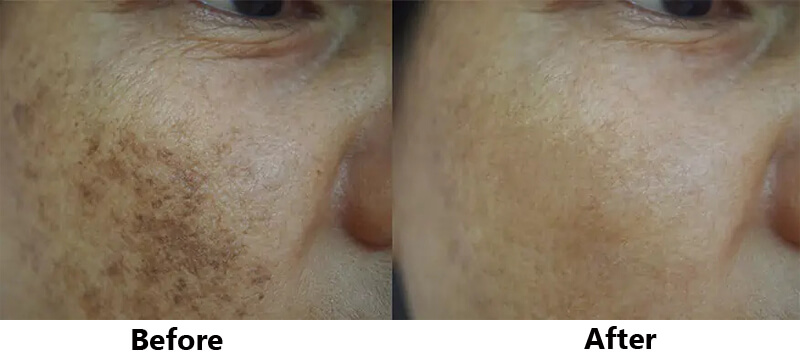
What Do IPL Procedures Do For Your Skin?
An IPL photofacial treatment uses the power of broadband light to improve the appearance of dark spots, sunspots from sun exposure, rosacea, age spots, and skin texture. The treatment can also be used for hair removal, photo rejuvenation, and to alleviate dermatologic conditions like acne. It is a popular treatment because it’s effective, affordable, and non-invasive. Not all skin types may be a candidate for IPL, so you should consult with a medical provider. Find a healthcare provider in your area here. Make the post of your IPL treatment by modifying your topical skincare routine before and after the procedure. Many practitioners recommend discontinuing retinol/retinoid use for several days prior to procedure and several days after.
How Many IPL Treatments Will You Need?
That depends on your skin needs. Someone with good skin and few sunspots may need only one treatment to see marked results. Someone with a lot of pigmentation may need 2-3 treatments 4-6 weeks apart. Those with Rosacea may need a series (3-4) of treatments, followed by a maintenance regimen, as rosacea is a chronic condition. Telangiectasias and broken capillaries may also need to be treated a few times to be most effective. Treatments are usually spaced 3-5 weeks apart.
Do IPL Treatments Have Side Effects?
IPL therapy is safe when performed by an accredited provider—but some patients do experience mild side effects. Occasionally, bruising may occur, which can take a week or two to heal. If you have freckles, sun spots, or age spots, it’s normal for these areas to appear darker for up to a week. Additionally, crusting or scabbing may occur in the treatment area, which can last up to 10 days.
Who is a Good Candidate for an IPL Photofacial?
IPL photofacials are primarily used for addressing pigmentation issues. So, if you have blotchy, sun-damaged skin with lots of freckles, IPL photofacials are an effective treatment. They also shrink large pores, remove broken capillaries, and lessen fine lines and wrinkles. Rosacea responds to IPL treatments. IPL photofacials are not effective for darker skin tones or deeply tanned skin, as the IPL wavelengths cannot differentiate between the age spots/pigmentation problems and the rest of the darkened skin. If you’re using Retin-A, doxycycline, or other medications, they will have to be stopped for one week prior to your photofacial.
How is an IPL Treatment Performed?
To start your IPL photofacial, doctor will rub gel on your clean skin, and give you a pair dark glasses to protect your eyes from the light rays. If you desire, do also can apply topical numbing cream to reduce the sensations of the treatment. Then place the IPL handpiece on the skin of the treatment area. The handpiece slides across the skin delivering light pulses. When the IPL device delivers the light pulse, you’ll feel a slight sting. Patients equate this with a small rubber band being plucked lightly against your skin. This process is repeated until the entire face or other targeted area is completely covered. This typically takes between 20 and 30 minutes.
IPL For Acne Treatment:
The IPL (Intense Pulsed Light) Acne treatment enables your physician to greatly improve your skin appearance, reduce your acne, while at the same time treat the redness and pigmentation of your skin. The unique IPL technology utilizes light flashes over the treated area, triggering biochemical response that will eventually eliminate the bacteria within the pores. IPL is a non-invasive solution on inflammatory acne with less collateral effects than oral medication.
IPL for Rosacea treatment:
Your physician can now treat your Rosacea symptoms and ensure great looking skin, while treating not only the redness and flush, but also removing skin imperfections and stimulate collagen and elastin fiber production. Rosacea treatment uses IPL (Intense Pulsed Light) technology to gently target the vascular condition.
Vein & Vascular Treatment with IPL:
The IPL treatments enable your physician to effectively treat spider veins, reticular veins (blue veins), broken capillaries and rosacea. IPL unique technology enables optimal tailoring of the light source and energy to effectively target the vascular condition and cause it to fade away.
Vascular Technology:
The laser or IPL create heat inside the blood vessels, which closes the vein’s walls, eventually causing the vein to disappear. The laser is very precise and only impacts the selected blood vessel and none of the surrounding skin. The IPL filter also targets the blood only and none of the surrounding skin. Just before IPL treatment, your physician will apply a thin layer of clear gel onto the treatment area. During treatment, your physician will treat the targeted veins by applying a few pulses on each blood vessel source. The treatment will take between 10-20 minutes, depending on the number of blood vessels being treated. During the treatment you may experience a stinging or burning sensation, but it is tolerable.
Post Treatment Instructions
1.Your skin may be irritated or red and feel as though you have mild sunburn. This is a normal occurrence and you may apply cool, not cold compresses to the treatment site. Do not apply ice or anything frozen directly to the skin. Apply cool compresses for no longer than 20-minute intervals.
2.Avoid the use of alpha or beta hydroxyl products, retinols, or Retin A products for 24 hrs after your treatment as they could create additional irritation. After 24 hrs you may resume your prescribed skin care regimen.
3.Flaking and crusting may occur. Do not attempt to exfoliate or remove any crusting. Areas with heavy sun damage and brown spots will darken over the first 24 hrs after treatment. Some of the red areas may intensify as well. Do not pick or abrade the area. This is part of the normal response to treatment and will clear on its own in 3-7 days. If you experience any open wounds contact your doctor.
4.Maintain hydration. Drink plenty of non-alcoholic, caffeine-free and sodium-free beverages and keep skin well hydrated as directed.
5.Cleanse and treat your skin as prescribed. Follow the directions you are given for your skin condition and goals. Proper skin care is essential to support the effects of your IPL treatment.
6.Do not expose your skin to direct sunlight for a minimum of 3 days. Good sun protection is essential following treatment. If you are outdoors apply a minimum SPF 30 and wear sun protective clothing and headwear. Following IPL therapy your skin is highly susceptible to sunburn or the formation of irregular, darkened pigmentation. Therefore, Sun protection is required for life to maintain the results you have achieved.
7.Follow-up as directed. Your treatment may require several treatments of many weeks to achieve optimal results. Results may not be visible after each treatment but may develop gradually in the weeks that follow. It is essential that your progress is monitored throughout your treatment cycle. Keep your appointments as directed.
Does insurance cover IPL?
No. These treatments are considered to be elective, cosmetic treatments. As such, insurance does not cover them. You can use money from a health savings account to pay for your IPL photofacial.
Your skin will be unprotected against sun exposure, however, so you need to be cognizant of that. You’ll have to avoid sun exposure for several days. From there you’ll need to really protect yourself for at least two weeks. It’s always a good idea to protect your skin from the sun anyway. After all, the pigmentation spots you’re having treated developed due to too much sun exposure.





